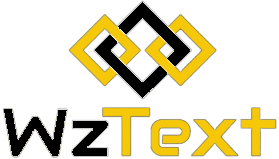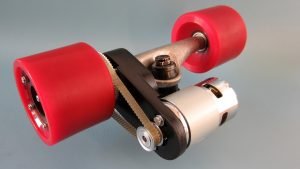The engine is now the most essential part of any electrical skateboard. Your whole design must revolve around your motor (s). You must evaluate how fast you want to go or how far you want to travel. You must consider whether you might still enjoy the liberty to push your board or the ability to climb hills. Belt drive motors have a brushless motor with a pulley on it that connects to a bigger gear here on wheels through a belt. Belt drives provide you with a variety of gear ratios, torque, and speed switchable choices. If you reside in a hilly area or want to use the vehicle for both on and off-road purposes, these motors can be excellent choices. With added endurance, many DIY only those motorcyclists convert their belts motors to chain drives. You can have them as a single motor or a couple of motors.
They also have a number of shifting gears that need to be fixed and may vibrate or move out of the square. The torque these little monster motors put out may necessitate adjustments to motor mounts, belts, and motors during and after a hard ride, depending on your configuration. However, once adjusted, the power will make you smile. Given the high torque curve, the best thing about moving parts is how you can convert any system to work on practically any motorized longboard truck, skateboard wheel, or even all rear axle with a pulley. There is a lot of support if you need it among the internet group, and no odd questions are rejected.
Direct Drive electric-skateboard
Direct drive engines combine the high torque and fast speed of belt-driven motors with the entering data of hub motors, eliminating a need for belts, mounts, or pulleys. The velocity, like the belt drive, is completely adjustable, with all of the energy traveling directly to the wheels. In spite of that direct power, these motors dissipate heat quickly, making them excellent for uphill racing. You get the perfect combination of ease of use, quick acceleration, and very well power management with any of these motors.
Its best part is that you can use any skate wheel with an adapter, including all-terrain wheels and push kicks if you forgot to charge your battery at the last stop. Of course, no engine is perfect for every situation, and direct drive has its drawbacks. Direct-drive motors are colossal in size. Cos of their tiny size, they are quite low to the ground and vulnerable to debris. Even a small rock can cause injury to their cans, which aren’t really impenetrable. Straight driving would’ve been extremely beneficial to riders who use pneumatic wheels on the street and off-road. You’ll want to start learning well how to slash & spin fast if you really want to experience the capacity to run low and fast on polyurethane street wheels.
The Drivetrain of an electric skateboard is the group of components that delivers power from the motor to wheels. This excludes any extra parts such as a battery or inverter because these systems store energy and convert it for use in other areas like powering lights on your deck, but not helping you cruise downhills!
A drive train includes four main parts: 1) The Motor which converts electricity into mechanical force 2). Transmission component 3), Reduction gears 4))Power distributions system
The Motor Pulley
The Wheel Pulley
The Drive Belt
Motor Mounting Plate and Truck Clamping Parts
The power behind a skateboard is crazy cool. Motors that produce it use the same technology as what’s powering RC planes, which means you can break any speed record without gas! The four parts above go into making this work: an electric motor with torque to move Drivetrain components; batteries store energy from braking or pedaling and provide juice for subsequent regenerative system turns-what we call “ Regeneration” in our sport; gyroscopes keep everything aligned even if there’s rough terrain underfoot.
In addition, collective sensing algorithms monitor each wheel independently while simultaneously balancing them against one another so hitting bumps won’t throw us off balance.

